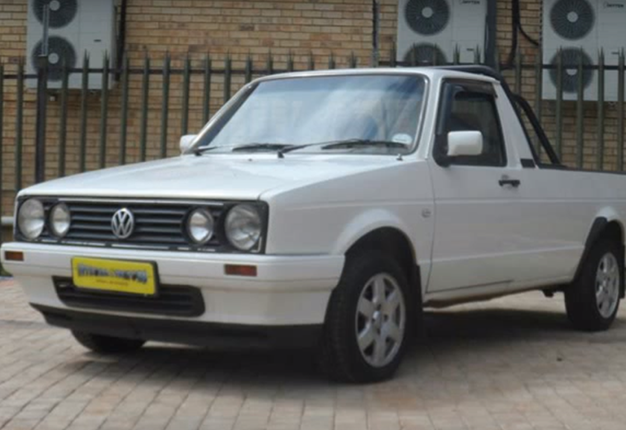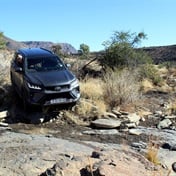
Compact cars and family sedans were a source of inspiration for South Africa’s bakkie logic in the 1980s. Lance Branquinho takes a look at five icons from the era.
Ford Cortina bakkie
Trust South Africans to make a bakkie out of anything. The project codename was P100 but for its local life-cycle, the third-generation Cortina based bakkie was never known as a P100.
READ: Cressida, Cortina, Caravelle... Here are some of Mzansi's motoring icons of the 1980s
Built in Port Elizabeth throughout the 1970s, the design would mature into the 1980s and today pristine examples remain some of the most desirable of all South African Fords.
Eventually replaced by the Courier, which would foreshadow today’s Ranger, the Cortina bakkie was an excellent example of necessity (Ford requiring a bakkie to rival Japanese product), being the trigger for dedicated local innovation.
The one to have, both back in the 1980s and in a contemporary collection, is the V6 version, powered by Ford’s venerable pushrod-valve gear 3-litre Essex engine.
Nissan/Datsun Safari
The Land-Cruiser 70’s archival and testament to what the Datsun brand name once symbolised. A slightly comfier cabin and less punishing ride made the Safari bakkie more tolerable to drive on tarred roads and once the bitumen became brittle, and real off-road terrain beckoned, it was tremendously capable.
Like the ‘Cruiser, Nissan equipped its Datsun off-road bakkie with a large capacity in-line six engine, which was both smooth in operation and boasted enormous endurance.
That 2.8-litre in-line six shared its basic structure with engines which would also power a variety of Nissan Z- and ZX-series sportscars in the 1980s.
The inline six-cylinder engine also gifted this bakkie its long-nose styling aesthetic and an iconic styling feature was the offset Datsun badge, which wasn’t centred on the grille but mounted to the left.
Toyota Hilux fourth-generation 2200 double-cab 4x4
The fourth-generation Hilux would establish Toyota’s dominance in the local bakkie market, a sales status it has never rescinded.
Despite awfully plastic interior materials, uncomfortable seats and statically underpowered 2.2-litre petrol engines, the Hilux 2200 double-cab 4x4 finally convinced both Land-Cruiser and Land Rover bakkie owners that perhaps there was an alternative to their traditional formula of adventuring and overlanding.
These solid-axle Hilux bakkies had brutal ride quality but were unbreakable and although open-road cruising ability was asthmatic at best (in parallel with curiously tragic fuel consumption), they are amongst the most capable off-road vehicles ever built – even by 2018 standards.
In fact, the Hilux 2200 SFA double-cab’s greatest achievement, is that it is considered a viable adventure vehicle purchase, three decades after the original launch. Something which can’t be said for any of the fourth-generation Hilux’s rivals, which have all been recycled as scrap. Mostly.
VW Caddy
With the Amarok only debuting in late 2010, you’d imagine VW was a spectator to the local bakkie market for decades. But it wasn’t.
Although VW couldn’t compete with the large bakkie class that Hilux effectively standardised in the 1980s, it saw a great opportunity for a front-wheel-drive lifestyle bakkie, which wasn’t as slow as those being produced by Ford, Mazda and Nissan.
Image: Youtube
The result was a loadbin enabled VW Golf, called the Caddy, and it was perfect for those urbanites who required something to toss hobby accessories in the back, but who didn’t yet have kids.
Caddy was much quicker than a Nissan 1400 and more driveable than Ford Bantam, being powered by a 1.8-litre engine, which made it a junior performance bakkie of sorts.
Isuzu KB
Perhaps the only bakkie from its era which could rival Hilux for durability, these first ‘square-faced’ Isuzu's became legendary within the South African agricultural and rural community.
The second-generation of Isuzu’s bakkie line established the brand’s KB nameplate in South Africa, with its range of small capacity diesel engines which simply never quit.
Isuzu popularised direct-injection diesel technology in the local market, which meant quieter compression ignition engines with slightly less vibrational harshness – and an excellent ratio of fuel consumption to workload.




 Publications
Publications
 Partners
Partners











